Quick Summary
HR in nonprofits balances payroll, compliance, recruiting, staff support, and volunteers while working with lean budgets and small teams. This article explores the challenges nonprofit HR leaders face and shares best practices to make HR a driver of mission impact.
What Does HR Look Like Inside a Nonprofit?
Fine, you know HR in the traditional sense, like hiring, payroll, compliance, and employee support. What’s different in nonprofits is the way these responsibilities are carried out under tighter budgets, smaller teams, and a mix of both staff and volunteers.
If you’re a new HR professional stepping into the nonprofit sector, or a seasoned leader adapting to a mission-driven environment, this article will guide you through what makes nonprofit HR unique, the challenges that come with it, and the best practices to manage people while staying true to your mission.
Why Listen to Us?
At Checkwriters, we work with nonprofits of every size, from local charities to national organizations. We know the pressures HR leaders face: limited budgets, compliance hurdles, and managing staff and volunteers side by side.
Our solution helps nonprofits simplify payroll and compliance while staying mission-focused. Here’s what one of our nonprofit customers had to say:

So when we share insights on HR in nonprofits, it’s grounded in real experience.
Let’s dive in.
What HR for Nonprofits Really Means
HR for nonprofit corporations carries many of the same fundamental responsibilities as HR in for-profit businesses. This includes compliance with labor laws, payroll management, recruitment, staff wellbeing, training and development, conflict resolution, and performance management.
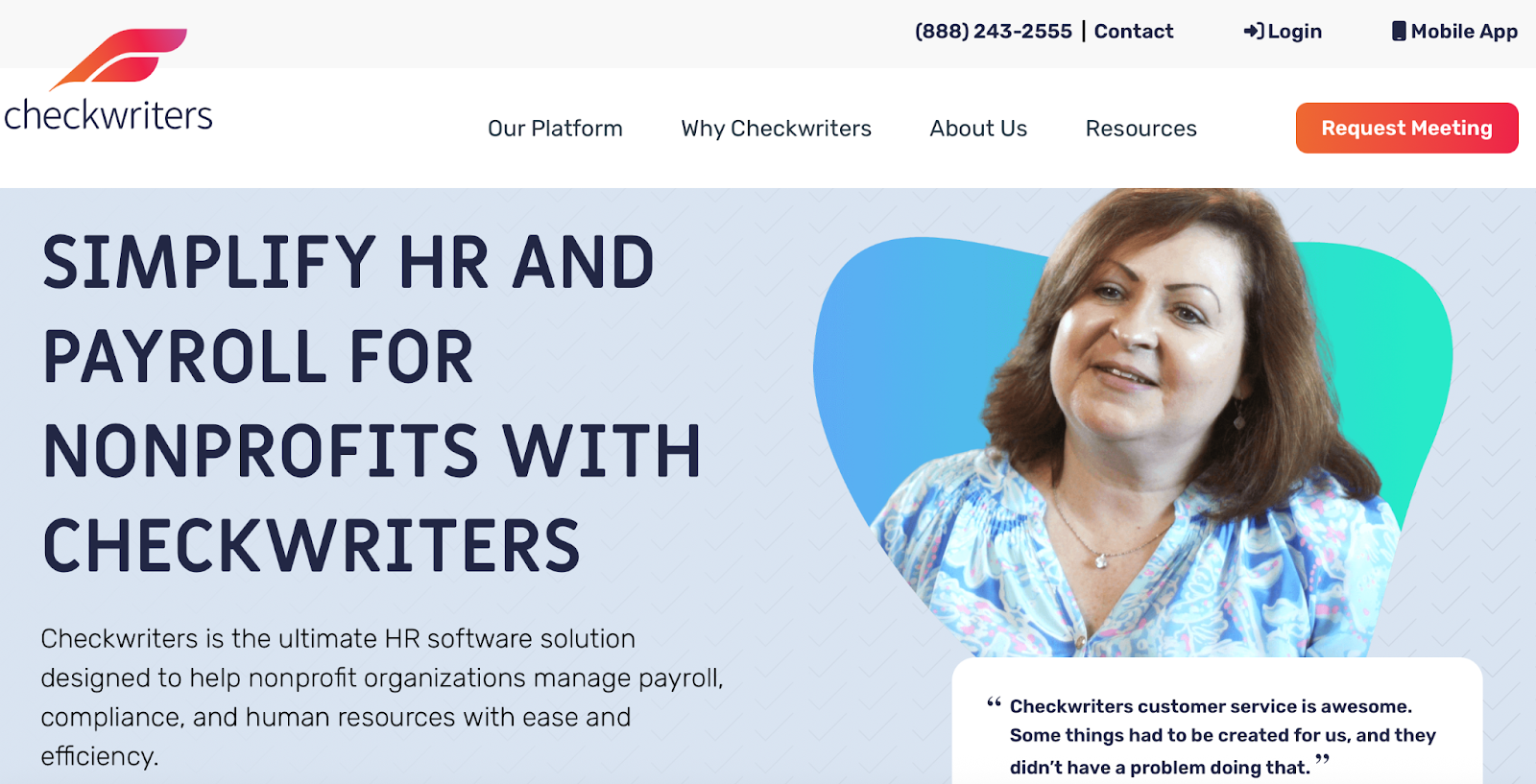
However, the difference between HR in nonprofit organizations and HR in for-profit companies lies in what the organization ultimately stands for.
In a for-profit business, HR operates with the larger goal of generating profit for shareholders, while in a nonprofit corporation, the priorities shift. The main focus is not profit, but mission.
Core Responsibilities of HR in Nonprofits
While the mission-driven context sets nonprofit HR apart, the work itself still comes down to responsibilities that shape both people and culture. In nonprofits, this means:
- Recruitment and Staffing: Hiring with the organization’s mission in mind, valuing passion as much as skill, and defining roles clearly so limited resources aren’t stretched thin.
- Onboarding and Offboarding: Bringing people in with intention and easing them out respectfully, ensuring smooth integration and preserving knowledge when staff or volunteers leave.
- Volunteer Management: Recognizing that volunteers make up a large share of the workforce and providing the structure, training, and recognition they need to stay engaged.
- Compliance and Documentation: Managing payroll, benefits, I-9 verification, and conflict-of-interest disclosures to keep the organization aligned with labor laws and donor expectations.
- Compensation and Benefits: Handling pay fairly and transparently, balancing lower salaries with creative perks, flexibility, and opportunities for professional growth.
- Culture Shaping: Promoting fairness, inclusivity, and collaboration so the nonprofit’s internal environment reflects the values it promotes externally.
- Engagement and Wellbeing: Keeping staff and volunteers motivated by celebrating contributions, supporting wellbeing, and reducing burnout in emotionally demanding roles.
- Board and Staff Relations: Serving as a bridge between staff, volunteers, and the board to build trust, maintain transparency, and keep decisions mission-focused.
In short, the responsibilities of nonprofit HR go beyond administration. They create the people-first foundation that keeps the mission sustainable, even when resources are limited.
Common Challenges in Nonprofit HR
Because nonprofits are resource-constrained and mission-driven, HR professionals face challenges that look very different from those in the corporate world. Drawing from what HR leaders often share in professional groups and forums, here are some of the most common hurdles:
Small Budgets
Many HRs admit that “stretching pennies” becomes their biggest job. Salaries often fall below industry standards, which makes recruiting difficult and morale tricky to maintain. Benefits like wellness stipends or professional development are the first to be cut, leaving HR scrambling for low-cost engagement ideas.
Wearing Too Many Hats
In small nonprofits, HR isn’t a dedicated department. Reddit threads are full of HR managers saying things like, “I’m also the payroll person, the compliance officer, and sometimes the unofficial IT help desk.” The lack of specialization often leads to burnout.
Staff and Volunteer Mix
Several HR practitioners point out the awkward balance of managing employees alongside volunteers. Volunteers sometimes expect the freedom of casual involvement but are still subject to policies, and staff can feel undermined when responsibilities overlap. Clear role definitions are often missing.
Weak Internal Controls
HRs often mention how informal processes create blind spots. Without strict policies for expense approval, donor fund tracking, or conflicts of interest, even well-meaning organizations risk misuse of resources. HR has to push for controls without making the workplace feel overly bureaucratic.
High Turnover and Pay Compression
Many HR voices online say retention is their toughest challenge. Talented staff leave for better pay elsewhere, while those who stay often face “pay compression”—long-tenured employees earning only slightly more than new hires. This breeds resentment and stagnation.
Limited HR Infrastructure
Some nonprofits don’t even have a formal HR department. Responsibilities are distributed across administrators or managers with little HR training, leading to inconsistent policies and a higher risk of errors.
How to Be Effective as a Nonprofit HR Professional
Being in HR at a nonprofit means balancing structure with flexibility. You may not always have the budget, staff size, or board support of a for-profit HR department, but there are practical ways to stay effective while keeping the mission front and center.
Get Organized
Many nonprofits struggle with messy or incomplete records: I-9s missing, onboarding inconsistent, and policies half-documented. The first step is to take stock. Audit your employee and volunteer files, clean up what’s missing, and build simple standard operating procedures (SOPs) for hiring, onboarding, and offboarding. Platforms like Checkwriters help centralize everything into one digital system so you can move from paper piles and spreadsheets to structured, compliant records fast.
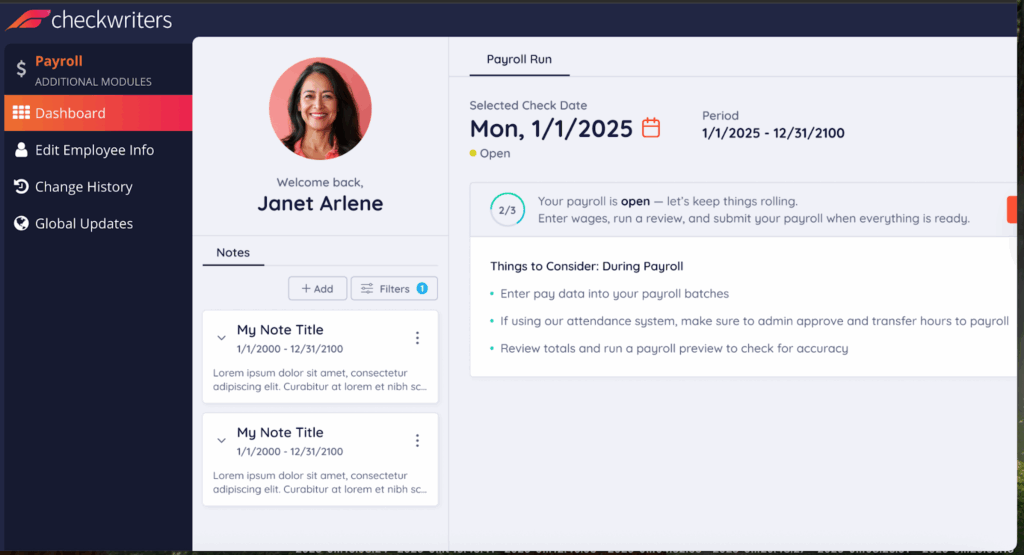
Adopt Lean HR Tools
Relying on spreadsheets or homegrown systems makes errors and compliance gaps almost inevitable. Affordable HR and payroll tools designed with nonprofits in mind can help you process payroll, manage time off, and stay audit-ready. With Checkwriters, you get a compliance-friendly, budget-conscious solution that doesn’t weigh down already tight resources.
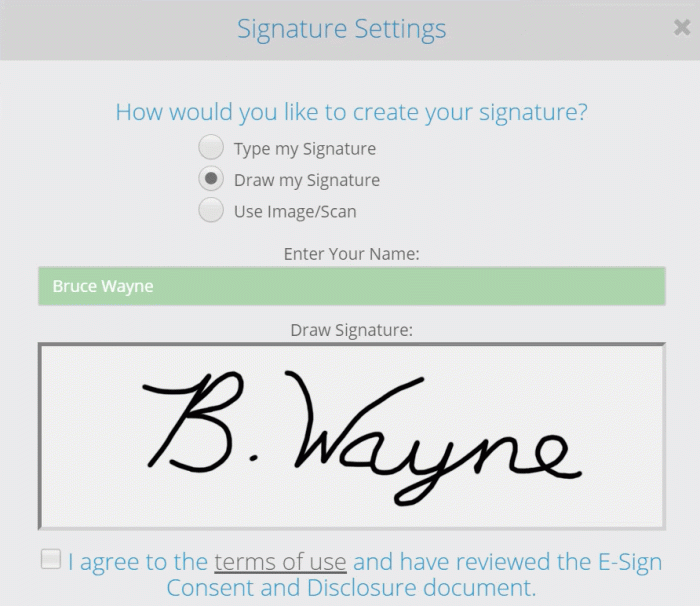
Support the Mission in Hiring
When you can’t always compete on salary, you have to compete on purpose. Recruit people who connect with the cause and are motivated by impact, not just compensation. Balance pay gaps with culture, flexibility, and recognition. Automation through tools like Checkwriters frees up your time from admin work so you can invest more energy into building a mission-aligned workplace culture.
Offer Creative Benefits
Budget constraints don’t have to mean empty hands. Many nonprofit HR pros successfully use flexible schedules, additional PTO, or professional development stipends as low-cost, high-value perks. Public recognition of staff and volunteer contributions can also go a long way. Checkwriters makes it easy to track PTO, benefits, and professional growth initiatives without manual errors.
Build Trust and Transparency
Nonprofit staff often feel the pressure of uncertain funding or unclear policies. HR can strengthen retention by being open about what’s possible, setting clear expectations, and advocating for fairness across pay and workload. Employee self-service portals within Checkwriters give staff direct access to their pay records, benefits, and time-off requests, which builds trust and reduces the perception of secrecy.
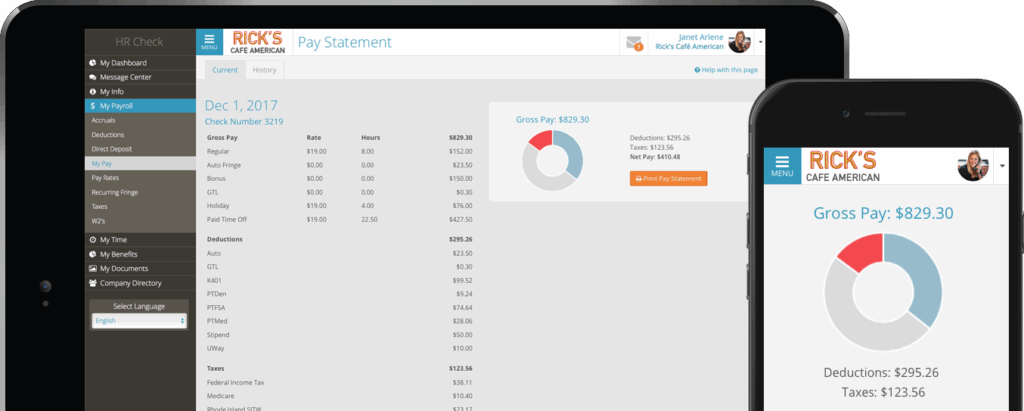
Invest in Training and Development
One of the most effective ways to keep people motivated, even when salaries lag, is to help them grow. HR can create opportunities for cross-training, mentorship, or affordable online courses that build both skills and loyalty.
Promote Collaboration Across Teams
Nonprofits often operate in silos — program staff here, fundraising staff there, volunteers on another track. HR can make the organization more effective by fostering cross-team collaboration. Whether it’s through shared training sessions, staff retreats, or regular check-ins, HR creates the structures that help people work better together.
Strengthen HR–Board Communication
Many HR frustrations trace back to the boardroom. Effective HR leaders make a point of keeping the board informed about staffing realities, compensation pressures, and compliance needs. Strong HR-board communication not only reduces conflict but also helps align policies with the organization’s mission and resources.
Best Practices for Nonprofit HR
Prioritize People Over Paperwork
The most effective nonprofit HR teams remember that their core job is nurturing staff, volunteers, and even board members. Automate what you can (payroll, records, benefits tracking) so you can spend more time on coaching, recognition, and relationship-building.
Recruit for Values Alignment
Skill is critical, but mission alignment is what keeps people engaged when resources are thin. Build hiring processes that test for both technical competence and cultural fit, ensuring new hires connect with the organization’s “why.”
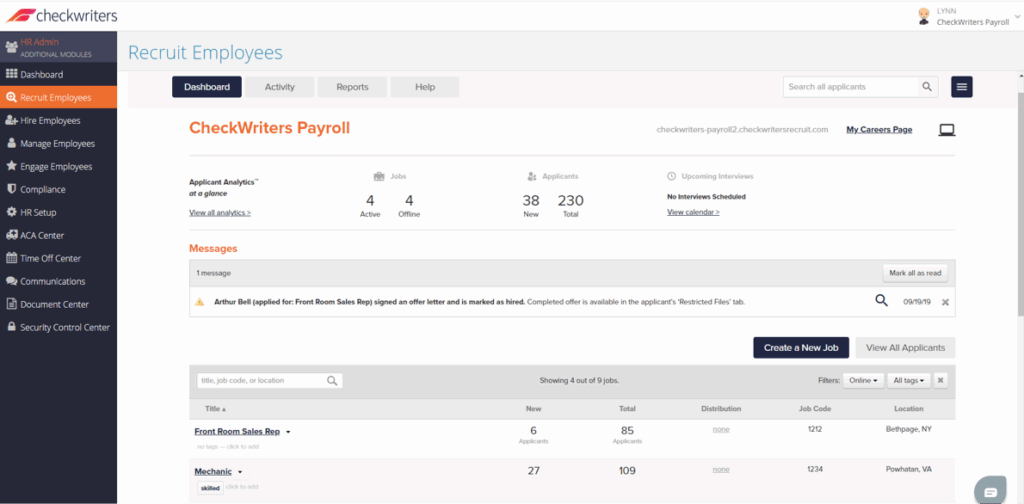
Formalize Volunteer Management
Treat volunteers with the same respect and structure as paid staff. Clear onboarding, role descriptions, and recognition systems help avoid blurred lines and keep volunteers motivated.
Stay Transparent with Staff
Nonprofit work often comes with uncertainty around funding, grants, or program sustainability. HR should communicate openly about what the organization can and cannot provide, avoiding rumors or surprises. Transparency helps build loyalty even when compensation is limited.
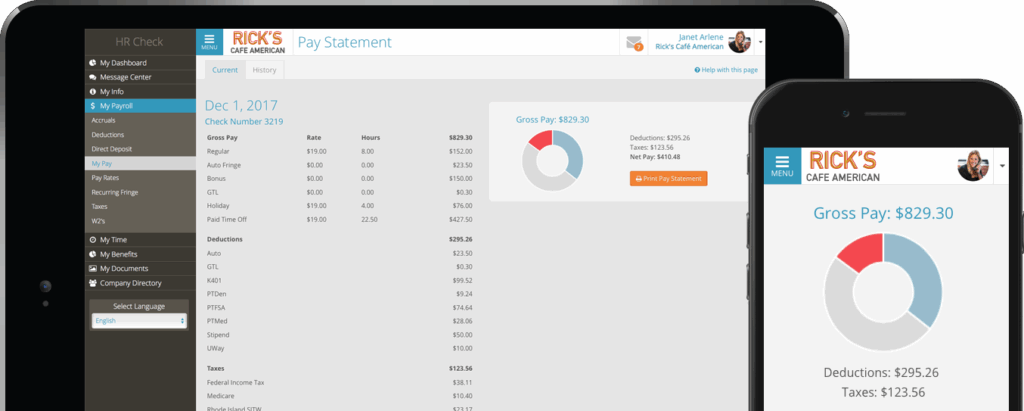
Invest in Professional Development
Even when budgets are lean, offer growth opportunities: training, mentoring, leadership rotations, or cross-functional projects. Employees who see a future with your organization are more likely to stay despite financial constraints.
Champion Equity and Inclusion
A nonprofit’s internal culture should reflect the values it promotes externally. HR should be proactive in addressing pay equity, inclusive hiring, and creating a workplace where diverse voices are valued.
Strengthen Board-HR Collaboration
Don’t let board politics stall necessary HR reforms. Build regular communication channels between HR and the board to align on policies, compensation strategy, and organizational priorities.
Encourage Feedback Loops
Best practice in nonprofit HR includes listening as much as leading. Regular surveys, exit interviews, and open forums give staff and volunteers a voice. Acting on that feedback strengthens trust and shows people they matter.
Recognize Contributions Publicly
Recognition does not have to cost money. Celebrate staff and volunteer achievements in newsletters, team meetings, or on the organization’s website. Small acts of acknowledgment reinforce morale and highlight the value of service.
Integrate HR with the Mission
Every policy and program HR develops should connect back to the mission. Whether it’s how performance reviews are structured or how training is delivered, weaving mission into HR practices helps keep people inspired and aligned.
The Mindset Nonprofit HR Leaders Need to Succeed
Even with clear responsibilities, proven practices, and the right tools, succeeding in nonprofit HR requires the right mindset. The work is demanding and often underfunded, which is why the right mindset matters. Here are four that make the difference:
Resilience
Nonprofit HR leaders often juggle multiple roles and face constant change. Resilience helps them stay steady, adapt quickly, and keep their teams focused even when resources are thin.
Creativity
Tight budgets limit traditional incentives. Creative HR leaders find new ways to engage staff and volunteers through flexible schedules, recognition tied to mission, and low-cost professional growth opportunities.
Empathy with Balance
HR must advocate for staff and volunteers while listening to concerns and building belonging. At the same time, empathy needs boundaries so HR professionals don’t burn themselves out.
Mission Alignment
Belief in the mission brings authenticity to HR work. Mission-driven leaders inspire others, reinforce culture, and keep purpose front and center.
Conclusion
Managing HR in a nonprofit means supporting people, balancing limited resources, and keeping the mission at the center. The challenges are real: tight budgets, high turnover, compliance demands, and the mix of staff and volunteers.
But with the right practices, HR leaders can turn them into opportunities for growth. With tools like Checkwriters, nonprofits can simplify payroll, keep records organized, and focus more energy on what matters most: their people and their mission.
Get started with Checkwriters here.